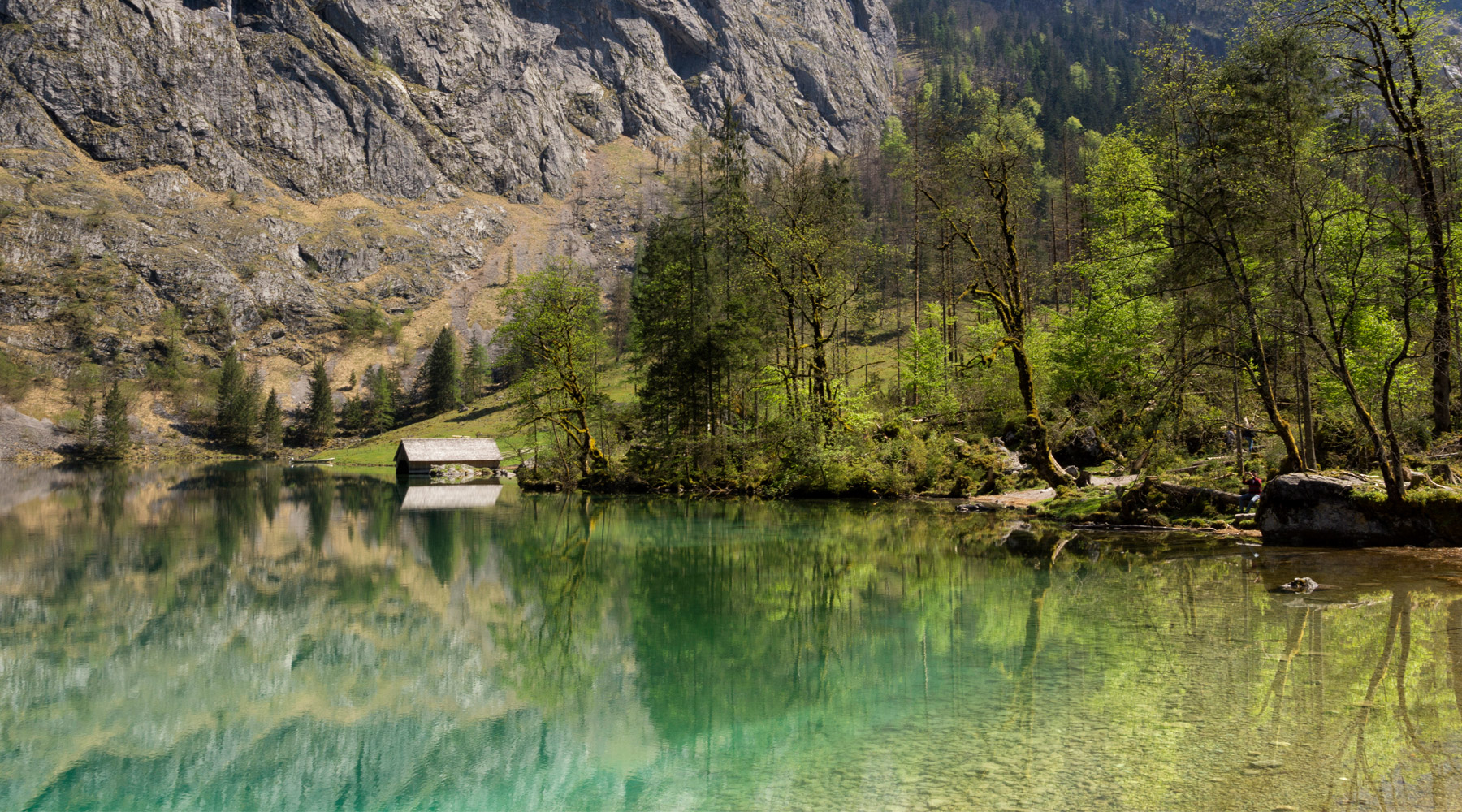Berchtesgaden National Park is a very famous national park in Germany, on its border with Austria, Free State of Bavaria. At the Berchtesgaden National Park’s entrance, the Haus der Berge is home to an attractive permanent installation, Vertical Wilderness, which takes park guests on a virtual walk through a steadily rising landscape panorama to educate them about the habitats within the park. Visitors will also experience seasons changing through light and sound effects.
In the Berchtesgaden National Park, long hiking trails provide access to untouched nature: a 250 km network of hiking paths traverses the park. You can see the diversity of species in the park on short walks, or longer hikes will offer a spectacular view of everything in the garden.
Things to See in Berchtesgaden National Park
A Permanent Exhibition Called the Obersalzberg Documentation
This exhibition is on display at Obersalzberg, which was Hitler’s summer resort and became his second residence after Berlin.
The Obersalzberg resort, which became Hitler’s vacation spot in 1923, was extended after 1933 to become the second seat of government in Germany after Berlin. In this exhibition, so much more than the history of Obersalzberg is presented. It also portrays the defining traits of the National Socialist regime by linking local accounts to a central theme of the dictatorship.
In 1999, the Obersalzberg Documentation, which the Institut für Zeitgeschichte (Institute for Recent History) opened in response to the Bavarian Finance Ministry, administering the property, confronted myth with historical reality.
All interested visitors to the “scene of the crime” are welcome to the exhibition as an information center.” Besides documenting the history of the Obersalzberg during the Third Reich, documentation presents extensive pictorial and test documentation illuminating aspects of internal political development.
The American administration used this area as a recreation area between 1945 and 1995, and there is also a concise history of the area. As the tour concludes, you will have a chance to see some of the bunkers that contribute to the notion that an “alpine fortress” exists. The media rooms installed here will be the culminating experience.
There are two parts to the exhibition: an audio room plays the voices of Jewish women who survived Auschwitz and Bergen-Belsen, talking directly about their experiences in the concentration camps after they were released in April 1945, and the second room features film clips from the Second World War.
Salt Mine Berchtesgaden
There lies a hidden world beneath Berchtesgaden’s Salzberger surface.
Every year, hundreds of thousands of visitors visit the Berchtesgaden salt mines, which are always worthwhile to see no matter the season. In a simple manner and with great clarity, Salzi describes how the “white gold” – as salt is called – is formed and how it can be extracted.
Salzie would like to invite you to celebrate your birthday deep underground. There will be a guided tour especially for you and your friends who can slide down the 40 meter long miners’ slide as much as they like. In the mine, guests may request cake or sausages at the end of their visit.
There’s no doubt that this trip is worth its salt!. Exciting adventure and an exciting atmosphere – see the salt mine from a new perspective. Among the tour’s highlights are a miner’s slide into the depths, a train ride through tunnels, and a shipwreck raft tour across a saline pool.
It also provides in-depth information about the chemical element salt, an essential life-giving element. The perfect family day out! Their Scalzi’s tip: Get your family together with a family ticket or a combined family ticket. Bad Reichenhall is home to the salt mine as well as the Old Salt Works.
A good value combined ticket that will give you an overview of how brine and salt were extracted in the past and today. The museum offers free guided tours through the salt mines, and salt works to children celebrating their birthdays (you must show identification cards ).
The Watzmann: A Picture of Life In Berchtesgaden
Berchtesgaden’s only registered mountain guide is Nina Schlesener. It has been a life-changing experience for her, and she loves sharing it with guests. Her relationship with Watzmann dates back to her childhood.
As a child, she often helped her parents run their mountain hut in Berchtesgaden. Watzmann was always before her eyes growing up as she lived among hikers and ambitious mountaineers.
This majestic mountain range is acclaimed far beyond the borders of Bavaria for its exquisite beauty. According to Bergsteiger magazine, it is even the world’s most beautiful mountain. Quite rightly so.
The site boasts excellent aesthetic value to Watzmann and a wonderful, pleasant hike to the top of this mountain. There is nothing quite like an apparent day to enjoy miles of views. Nina Schlesener exclaims with enthusiasm that it is the only view of that kind in Berchtesgaden.
Flora and Fauna on the Watzmann
Its nature and wildlife distinguish it from other regions. It is also the native home of ibexes, which were nearly extinct. Aside from rare alpine roses and gentians, walkers will also see ibex. As a result of Berchtesgaden’s protection, which is mainly left to nature, their numbers have significantly increased over the last few years.
Farmer alps who graze their cows and sheep in this area keep this untouched natural environment in check. The result is a unique cultural landscape.
Legend has it that cruel King Watzmann built Berchtesgaden’s landmark. Every member of the royal family became stone due to a shepherdess curse. A mountain, a valley, and the Watzmann family – a father, a mother, and their seven children in total – are now metamorphosed at the bottom of lake Königsee.
The Watzmann an Increasingly Popular Place
There are many caves inside the Ice Chapel, which was formed by water runoff from the glacier. You can enjoy this impressive ice field from the Königsee lakeside, where a popular walking route passes through this church. However, visitors should use caution in its corridors.
A significant increase has occurred in the number of walkers since Nina Schlesener’s childhood. The Watzmann received approximately 6,000 visitors in 2016. The mountain guide’s mission is to guide these people more than their profession. “I get to fulfill so many dreams because it means so much to me,” she said. It’s impressive to see the moment when they’ve accomplished everything.
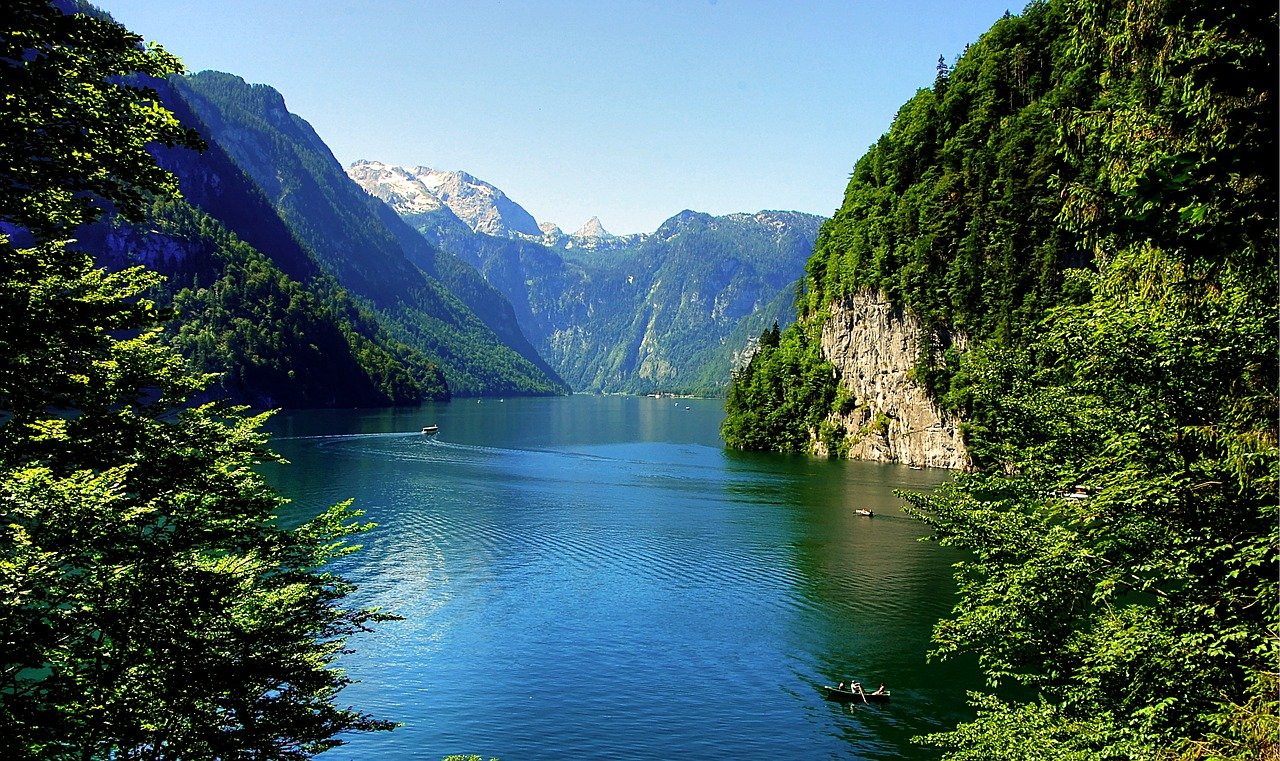
Alps Highest Mountain
All generations of mountaineers are moving towards the Berchtesgaden Alps, which has the highest mountain in this area. “A lot of people enjoy the outdoor activity possibilities on the Watzmann,” states the guide. Many serious mountaineers want to climb this mountain, but even families with children aren’t scared of its height of 2,713 meters. The Watzmannhaus, where you can spend the night under twinkling stars, is reachable in around four hours by both adults and children.
It is widely known that the best climb in the entire world is the Watzmann East Wall. The highest mountain in Eastern Alps at almost 2,000 meters, this is truly an exceptional experience. This is why it has been ranked among Germany’s top ten geotopes, along with the Ice Chapel near the East Wall.
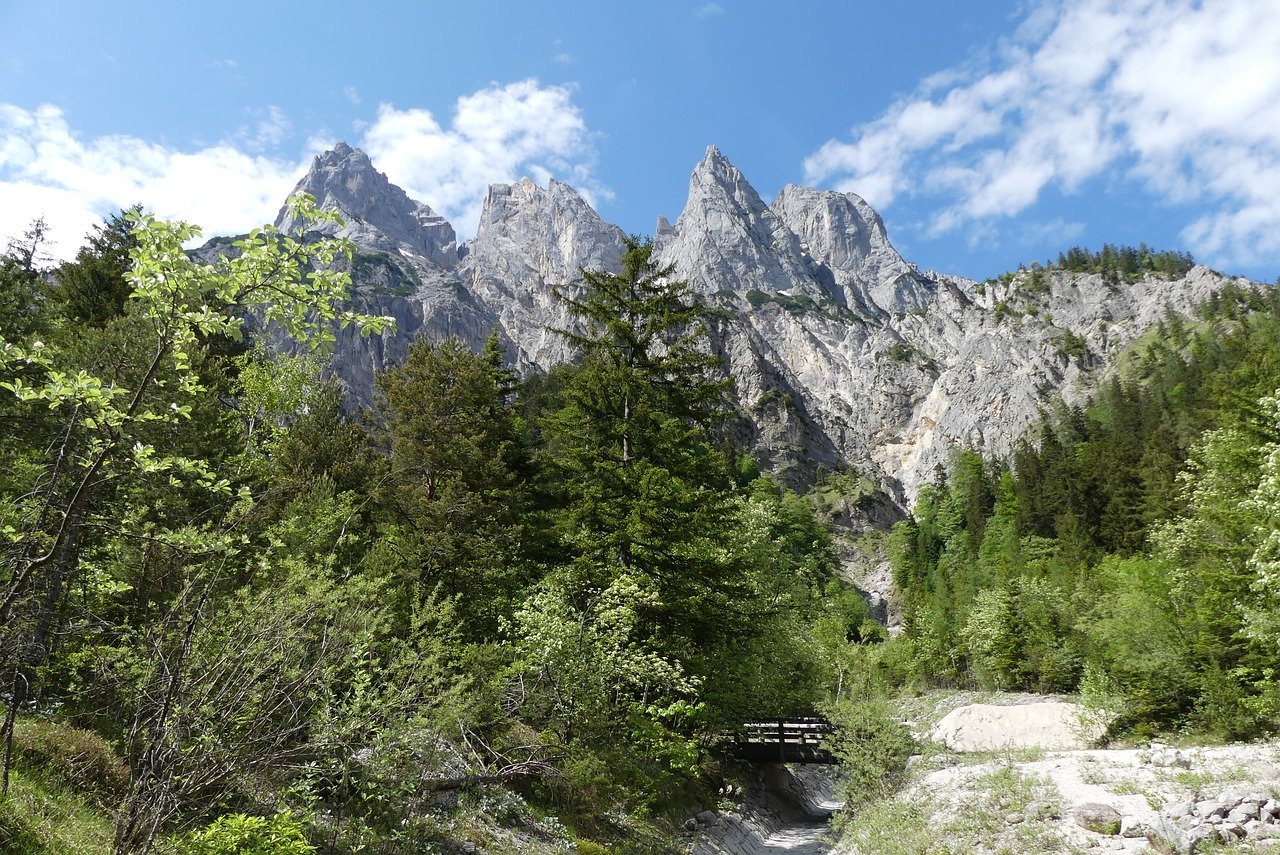
Königssee and Hintersee Lakes
This large lake occupies the whole valley between Watzmann to the west and Jenner and Gotzenberg to the east. The lake measures around eight kilometers long and over a kilometer wide at its widest point. There is no better place to find peace than in the Bavarian Alps. Bavaria’s government established the Berchtesgaden National Park in 1978 to preserve Berchtesgaden’s pristine lakes and mountains. Obersee, connected to Königssee by a brook, lies at the end of a valley surrounded by high mountain walls.
An unspoiled cultural highlight along Watzmann’s east wall is the small pilgrimage church of St Bartholomew. Each autumn, a special event takes place at Lake Königssee: The “Almauftrieb.” From the meadows behind the lake, cows are moved as summer winds down. Boat transport is required for them to be transported back to their barns. The following spring, they return to the meadows above the lake from the opposite direction. So, two times a year, the cows can take a boat trip over Lake Königssee.
In nearby Ramsau, the 16-hectare Hintersee lies on the border of the Berchtesgaden National Park, surrounded by high mountains to the west and south. Boulders cover much of the flat area that stretches along the shore, some of which are wooded and meadowland.
The lake’s main appeal is its location below the steep walls of the Reiteralm and Hochkalter, whose reflection can be seen on a clear day on the water’s surface. A beauty spot like this is not surprising that it was a magnet for painters from 1850 on. Hintersee matched their criteria: a natural haven away from town.
Today, thousands of holidaymakers are attracted to the magnificent scenery that surrounds the lake. In addition, there is an excellent system of hiking trails in the area, which makes it attractive to walkers.
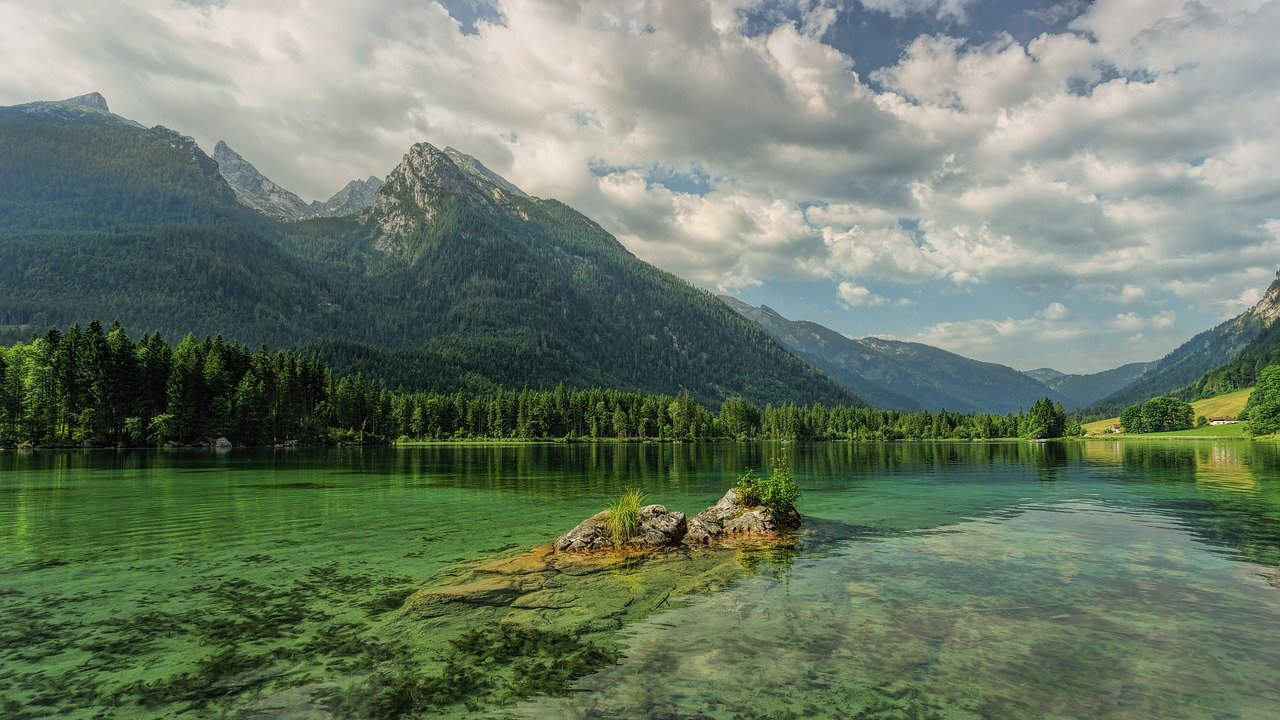
Stunning Scenery of the Bavarian Alps along the German Alpine Road
A tourist can enjoy the German Alpine Road in a convertible, a motorbike, or a motorhome. There is no doubt you will enjoy the views of the valleys and the mountains along the route.
Taking the entire German Alpine Road requires a minimum of four days. Despite this, there are plenty of highlights along the German Alpine Road to truly experience the rich cultural heritage of Bavaria for several weeks.
Lindau is ideally located on the shore of Lake Constance and offers the perfect starting point for your journey. Explore the city’s charming streets before heading to the mountains at the edge of the Allgau Alps. Be sure to stop at one of the city’s lovely street cafés for some lunch. On the road, you can see the Nagelfluh mountains in all their glory.
In Bad Hindelang, you begin your journey to the Oberjoch Pass. A German record of 106 curves and 300 meters altitude makes this an exceptionally thrilling experience for motorcyclists.
In the summer months, you can swim in Lake Weißensee, Lake Hopfensee, Lake Forggensee or visit the enchanting castles of Neuschwanstein and Hohenschwangau reminiscent of the fairytale land of King Ludwig II. Passengers always recommend visiting Füssen for its romantic atmosphere.
Baroque Abbeys and Handicrafts on the German Alpine Road
The route goes into the Ammergauer Alps and through the Werdenfelser Land area, passing through the Baroque Pfaffenwinkel area with its churches and abbeys.
Watch the sunset from central Germany’s highest peak – or jump on a cable car in Garmisch-Partenkirchen and take the ride yourself. An interesting stop-off is Oberammergau, which boasts world-famous wood carving art and elaborate frescoes.
The road passes through Krün and Wallgau, the Ettal Abbey, and Linderhof Castle. As you descend from Lake Walchensee to Lake Kochelsee via Kesselbergstraße, you navigate 14 hairpin bends with an average gradient of four percent. “Blue Riders” artists once drew inspiration from the light of the Kochler Moor. You won’t want to miss a walk through the charming old town of Bad Tölz.
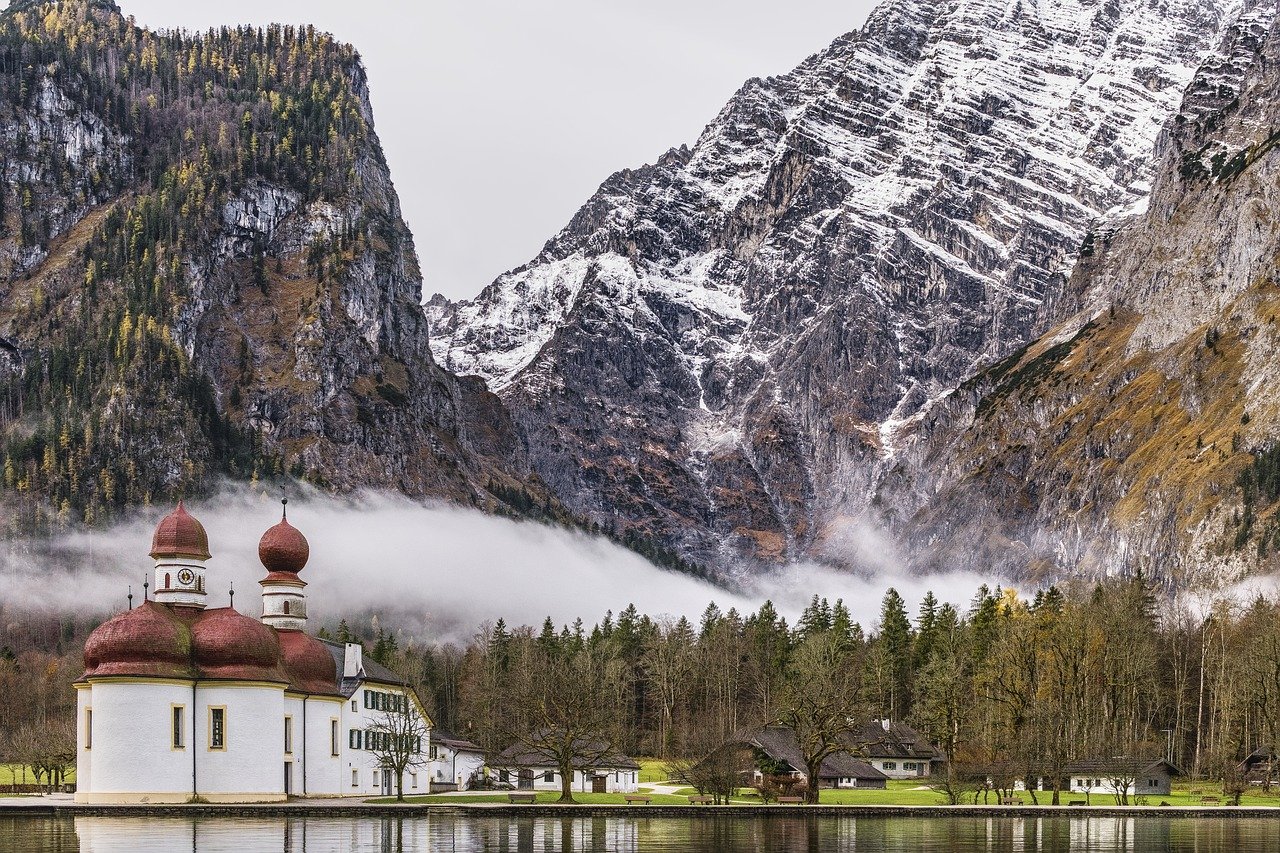
Ending an Adventurous Tour on a High Note
The Tegernsee and Schliersee area surrounding Lake Tegernsee are known as gourmet’s heaven. Suppose you are looking for a beer garden, tavern, or Michelin star restaurant. In that case, you will have a chance to enjoy the local specialties and experience firsthand the charming atmosphere typical of Bavaria.
As you continue eastward, you come to the steepest part of the German Alpine Road. The Masereralm is accessible from Unterwössen in Chiemgau at a gradient of twelve percent. You still have time to check out Reit im Winkl, a picture-postcard mountain village on the home stretch. Then, enjoy a relaxing session in Bad Reichenhall as you conclude your trip along the German Alpine Road.
A Forerunners of Artists Along Lake Chiemsee
From the tiny island of Fraueninsel, you can see the Chiemgau Alps from the south of Lake Chiemsee. Bavaria’s largest lake – accompanied by the constant splashing of the waves – is dotted with ancient trees whose leaves gently sway in the wind. The lakes are surrounded by a picturesque landscape made up of shallow banks, tiny bays, and extensive moorland.
Chiemsee has fascinated people for centuries with its beautiful scenery. Fraueninsel is a tiny secluded island where four young artists from Munich settled in 1828. A sculptors’ and writers’ colony was established in Frauenchiemsee on this day, and it is one of the oldest and best-known artist’s colonies in Europe.
They capture their desire to capture perfect beauty in paintings using various exquisite motifs:
- The beautiful idylls in light and shadow
- The romantic fishermen’s houses of the island
- The colorful gardens
- The hand-painted dwellings
- The floral gardens
Thus, the mythology of Bavaria is spread around the world through their landscape paintings.
Fraueninsel in the middle of Lake Chiemsee remains a haven for artists to this day. Georg Klampfleuthner leads the potteries on the island. His pottery has been in the family since 1723, when the pottery was initially established to serve the monastery.
Over 400 years, over 400 ceramic items have been produced in the workshop overlooking the lake. From tiles to crockery, jugs to plates, these items are created for various individual customers. This product line results from traditional craftsmanship, great attention to detail, and a unique, distinctive style.
Georg Klampfleuthner takes that very seriously. He believes tradition is a living concept that has to be updated regularly.
He emphasizes that the pieces must remain authentic for the souls of my predecessors to live on through them to stay away from anything too hackneyed. You can further develop this tradition if you let some of your personality flow into the piece. In this way, you’re creating an authentic piece.”
Members of the Frauenchiemsee artists’ colony have been creating things for eternity for centuries. Taking inspiration from the natural paradise of the “Bavarian sea,” the name given to Lake Chiemsee.
His modern line employs light, soft glazes, which allow the original clay colors to shine through. In addition, Klampfleuthner’s art is further inspired by the unique beauty of his local surroundings.
The transparent appearance gives the illusion that you are looking at flowing water, says the 54-year-old. Instead, each piece of Lake Chiemsee produced by the island pottery bears a small amount of Lake Chiemsee’s character.
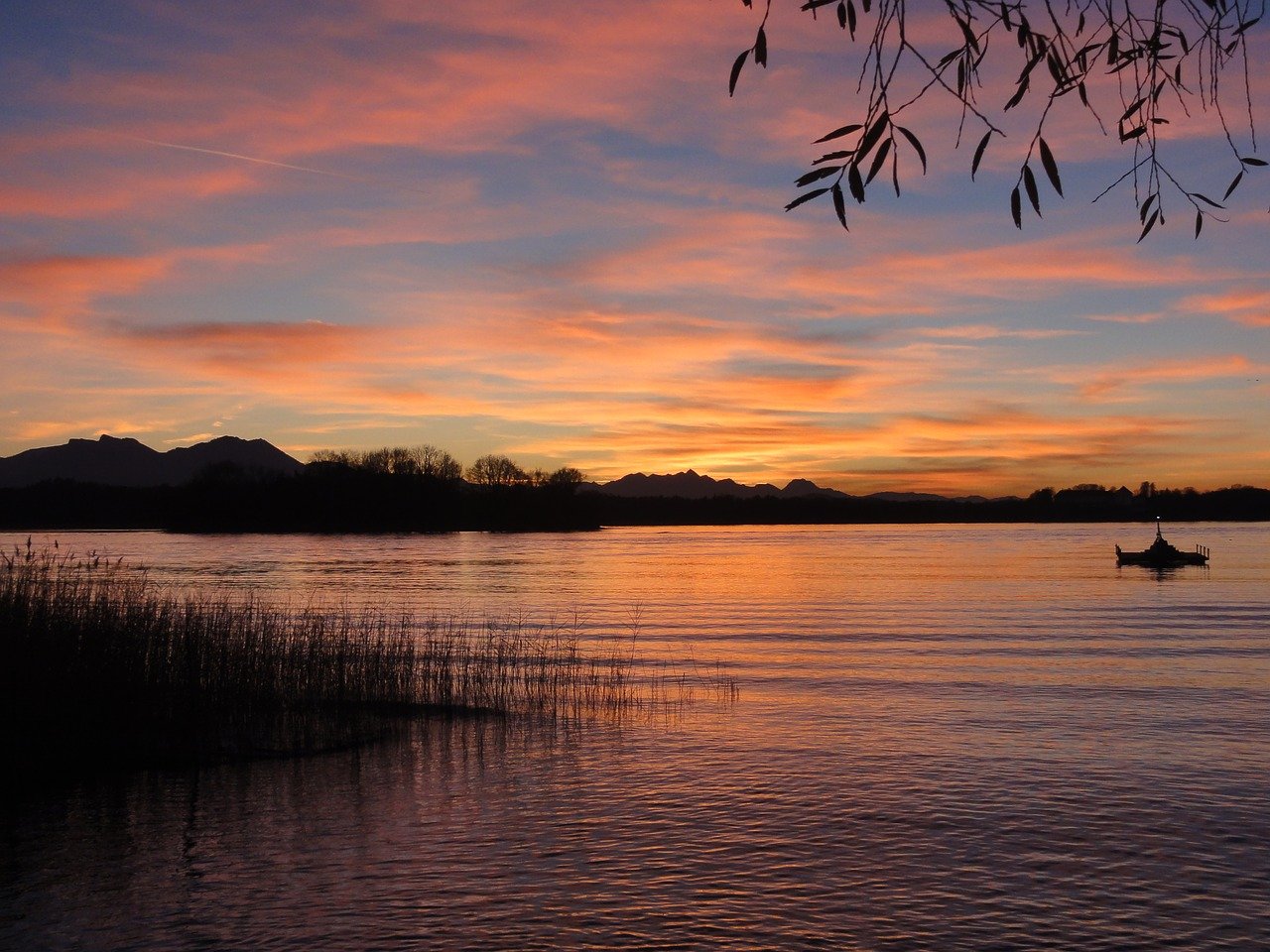
Füssen im Allgäu
Füssen, Bavaria’s highest town, lies on the shores of the Alpine River Lech amid beautiful natural scenery just a few minutes from Neuschwanstein and Hohenschwangau. It represents many popular tourist routes, including the Romantic Road, the German Alpine Road, and the Trans-Alpine Via Claudia Augusta. The Hohe Schloss, or High Castle, sits in grand majesty above the city with its vivid illusionist paintings.
Medieval townhouses sit alongside Baroque churches in the beautiful old town of Füssen. A summer stroll through the old town district reveals several street cafes that lend it almost an Italian flair. Besides the views from the Hohe Schloss towers, a boat ride on Lake Forggensee will provide magnificent views of Neuschwanstein Castle against an Alpine background.
The Romance of Aristocratic Bavaria
In Füssen, you can still find traces of the Bavarians. In the late 19th century, the Hohe Schloss above Augsburg was revived from its slumber as a residence for Imperial Crown Prince Maximilian, father of Ludwig II, the Fairy Tale King.
Maximilian found the ruins of Schwanstein Castle while traveling through the Alps and decided to build his castle nearby, Hohenschwangau.
This idyllic mountain range with wild mountains and natural lakes – the Allgäu was the favorite retreat of Emperor Ludwig II of Bavaria. He could escape the everyday life of the government in Munich. The Neuschwanstein Castle was a realization of his dreams.
Throughout the surrounding countryside, Neuschwanstein Castle offers a panoramic view. While you’re on a castle tour, you can see why Ludwig II decided on the throne room as the location for his “Holy Grail.”
In a forest covered in lush greenery, the sparkling waters of the Alpsee and Schwansee lakes are interspersed, and between them, in warm yellow, stands Hohenschwangau Castle, a world of Ludwig’s childhood dreams.
Further east, you can see the Forggensee and Bannwaldsee lakes beyond the Kalvarienberg mountain. To the west are the silhouettes of Füssen and Germany. There is a sense of expansive parkland in the gently undulating pre-Alpine landscape at the foot of the majestic peaks.
There has always been a strong connection between the royal family and Füssen. Thus, for example, the road to Füssen’s Kalvarienberg was built by the Emperor and his wife Marie, while the eternal light engraved at the hill’s summit could be seen from Hohenschwangau Castle at night.
It is said that Ludwig himself took part in the traditional Good Friday procession up the Kalvarienberg in 1886, the year of his death. He had his mother Marie’s body transported from Füssen to Munich when she died in Hohenschwangau in 1889 – the first trip along the newly built railway.
It was not uncommon for prince Regent Luitpold and members of the Bavarian royal family to visit Füssen by train to the Theresienbrücke, the only way to cross the Lech on their way to Hohenschwangau.
The city of Music Füssen has a rich history dating back more than 2000 years. St. Mang, the former Benedictine monastery directly beneath the Hohe Schloss, features a spectacular Baroque complex.
Since St. Magnus in the 8th century, it has been an important place of worship. The Museum of Füssen within the abbey complex is worth a visit. The Baroque Basilica stands on medieval foundations and has some of the oldest frescoes in Bavaria in its east crypt (980, Reichenauer school).
With its dazzling decorations and vibrant colors, this club offers visitors an introduction to the world of Bavarian Baroque: Imperial Hall, library, colloquium, and chapter house – elegantly decorated interiors that demonstrate the former financial prosperity of the Benedictine monastery. Füssen, as well as its lute-making heritage, is home to a beautiful collection of historical lutes and violins.
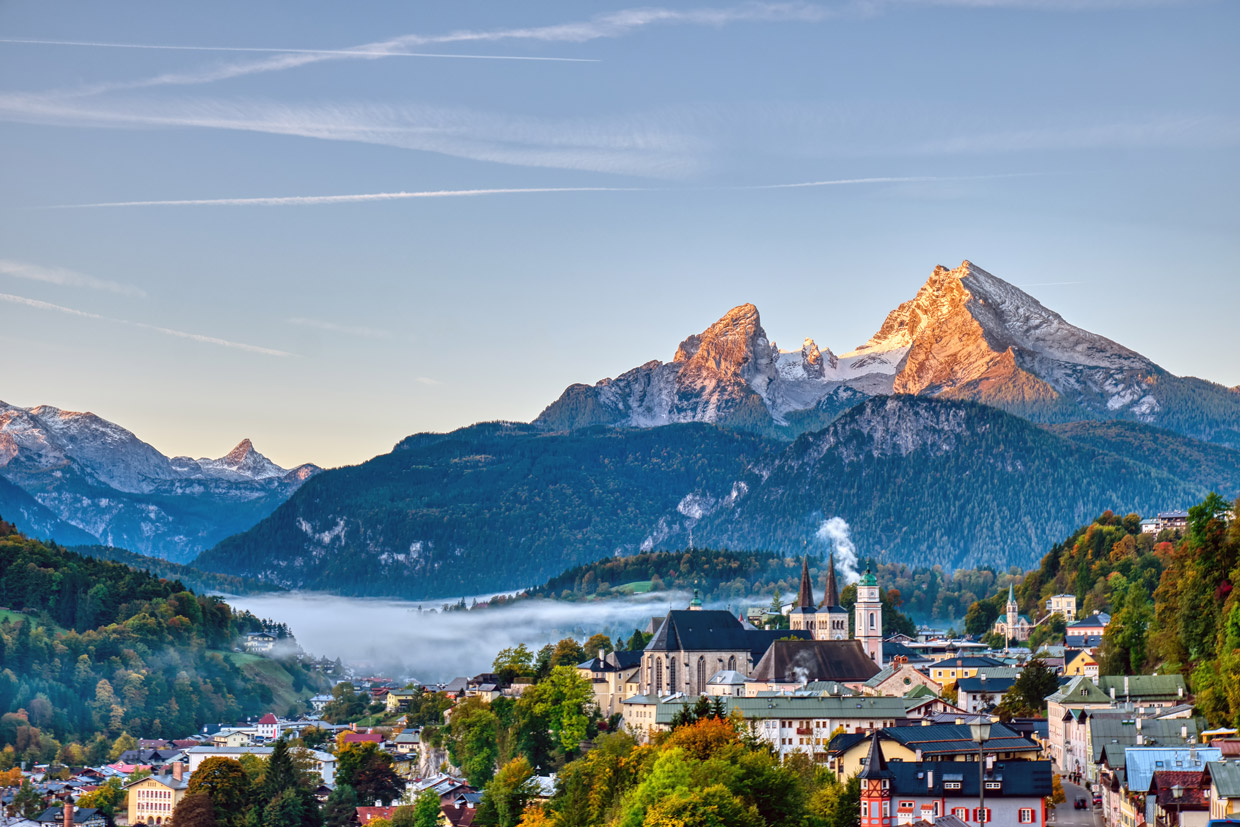
The Hotels Close to Berchtesgaden National Park
The Alpenchalet Bianca Hotel
Located just 801 m from Ramsau, this family-run guesthouse is surrounded by a forest and offers friendly service. Guests can enjoy a breakfast buffet each morning at this hotel.
With its country-style design and spacious rooms, Alpenchalet Bianca offers a relaxed and peaceful experience. Each of the guest rooms has a balcony where you can take in the view of the Berchtesgaden Alps. An additional fee is charged for wireless internet access and wired internet access.
On the German Alpine Road, you can explore Bianca. It is located on the hiking route of the Ramsauer Mountains. Five miles away from the hotel is Königsee Lake.
Outside Alpenchalet Bianca is a private parking lot that is free to use. Within two minutes of the closest bus stop, you will find yourself at the bus stop.
The Alpenresi Hotel
The Ramsau Guest House will provide you with all the information you will need to explore the hiking trails and ski runs of the Berchtesgaden National Park. The house has a traditional Bavarian design.
Privately run Alpenresi offers a peaceful atmosphere and private bathrooms only a 10-minute drive from Berchtesgaden and Königssee. Views of the mountains can be seen from some rooms’ balconies. For an additional charge, this hotel offers the use of its Wireless Hotspot.
Throughout the day, you can enjoy a tasty Bavarian breakfast buffet in their dining area, which is included in your room rate.
Visit the Wanderweg zum Zauberwald, a hiking route within walking distance, or discover the closest ski slopes, 6 km away.
Walking to the center of Ramsau takes about ten minutes from the guest house. The area around the hotel is home to several restaurants.
Mozart’s hometown of Salzburg is located only 35 minutes away, so culture fans will be happy to visit.
The Wirtshaus und Pension Hocheck Hotel
Located in Ramsau, at the foot of the Berchtesgaden Alps, this guest house and inn offer breathtaking mountain views. There is free WiFi, traditional Bavarian cuisine, a beer garden, and a shaded area under chestnut trees.
Guests of Wirtshaus und Pension Hocheck enjoy complimentary toiletries in their private bathrooms and TVs in all of their rooms. The rooms are all equipped with bed linen, and many of them have balconies.
A short walk from the Gästehaus and Pension Hocheck will take you to the romantic Wimbachklamm ravine and the Wimbachgries valley. The foot of Watzmann Mountain is home to many excellent hiking trails.
Free parking is available at the property for guests.
The Haus Kehlstein Hotel
Located 15 miles from Salzburg and 4.3 miles from Berchtesgaden, Haus Kehlstein is situated in Ramsau. There is an idyllic location for the farmhouse in Ramsau, inside Berchtesgardener Land, right next to the UNESCO-protected waterfall, Wimbachklamm.
The hotel’s rooms are all equipped with flat-screen TVs. For your convenience, each unit comes with a seating area. In addition to the private bathroom, each room offers a shower or a bathtub. In all parts of Haus Kehlstein, there is free WiFi.
In the surrounding area, there are six ski elevators that guests can use. Additionally, the property is within 15 minutes of a ski school and ski equipment rental facility.
As well as a sunny terrace and a view of the mountains, Haus Kehlstein offers you a comfortable stay.
Located in the Saalbach region, Haus Kehlstein is approximately 20 minutes away from Saalbach and 27 minutes from Kitzbühel. Guests are welcome to park for free on-site.
The Pension Gasthof Wimbachklamm Hotel
The Pension Gasthof Wimbachklamm Hotel is a restaurant, a bar, and a shared lounge at the Pension Gasthof Wimbachklamm, located in Ramsau. Guests staying at this property can also enjoy its terrace. An extra charge can be applied for arranging private parking.
Guests at the hotel will find their rooms equipped with a wardrobe, a TV, and a bathroom.
For breakfast, Pension Gasthof Wimbachklamm offers both a continental and a buffet selection.
In Ramsau and its surroundings, guests will take part in activities such as hiking, skiing, and cycling.
There is a 19-mile drive between Salzburg and Pension Gasthof Wimbachklamm and a 5.6-mile drive between Berchtesgaden and the property.
